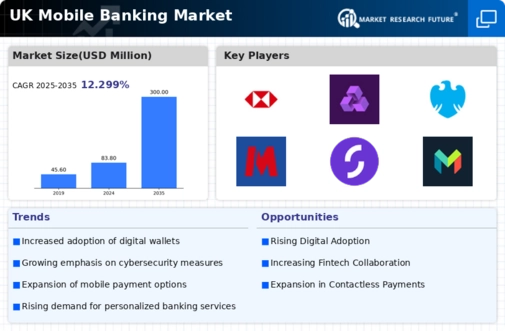Increased Financial Inclusion
The mobile banking market is playing a pivotal role in enhancing financial inclusion across the UK. With the proliferation of smartphones, individuals who previously lacked access to traditional banking services can now engage with financial institutions through mobile platforms. This shift is particularly beneficial for younger demographics and underserved communities. According to recent data, approximately 15% of the UK population remains unbanked, but mobile banking initiatives are expected to reduce this figure significantly. By providing accessible financial services, the mobile banking market is likely to expand its user base, potentially increasing market penetration by 20% in the coming years.
Regulatory Support and Compliance
The mobile banking market benefits from a robust regulatory framework that promotes innovation while ensuring consumer protection. In the UK, the Financial Conduct Authority (FCA) has implemented regulations that encourage competition and transparency among financial institutions. This regulatory support is crucial for fostering trust in mobile banking services. Additionally, the Open Banking initiative allows third-party providers to access customer data, which can lead to enhanced service offerings. As a result, the mobile banking market is projected to grow by approximately 25% over the next few years, driven by increased consumer confidence and a wider range of available services.
Rising Consumer Demand for Convenience
Consumer preferences are shifting towards convenience, significantly impacting the mobile banking market. With an increasing number of individuals seeking seamless banking experiences, mobile banking applications are becoming essential tools for managing finances. In the UK, surveys indicate that over 60% of consumers prefer using mobile banking apps for everyday transactions, such as bill payments and fund transfers. This trend is likely to continue as more users embrace the convenience of banking on-the-go. Consequently, financial institutions are investing heavily in mobile app development to meet this demand, which could lead to a 40% increase in mobile banking transactions by 2027.
Growing E-commerce and Digital Payments
The rise of e-commerce is a key driver for the mobile banking market, as more consumers turn to online shopping and digital payment solutions. In the UK, e-commerce sales have seen a remarkable increase, with estimates suggesting a growth rate of 25% annually. This trend necessitates efficient payment methods, and mobile banking applications are well-positioned to facilitate these transactions. As consumers increasingly prefer contactless payments, the mobile banking market is likely to benefit from this shift, with projections indicating that mobile payment transactions could account for over 50% of all e-commerce payments by 2028. This growth underscores the importance of mobile banking in the evolving retail landscape.
Technological Advancements in Mobile Banking
The mobile banking market is experiencing a surge due to rapid technological advancements. Innovations such as artificial intelligence (AI) and machine learning are enhancing user experiences and operational efficiencies. In the UK, the integration of biometric authentication methods, such as fingerprint and facial recognition, is becoming commonplace, thereby increasing security and user trust. Furthermore, the adoption of 5G technology is expected to facilitate faster transaction speeds and improved connectivity, which could potentially lead to a 30% increase in mobile banking usage by 2026. As these technologies evolve, they are likely to reshape the mobile banking market, making it more accessible and user-friendly.




















Leave a Comment